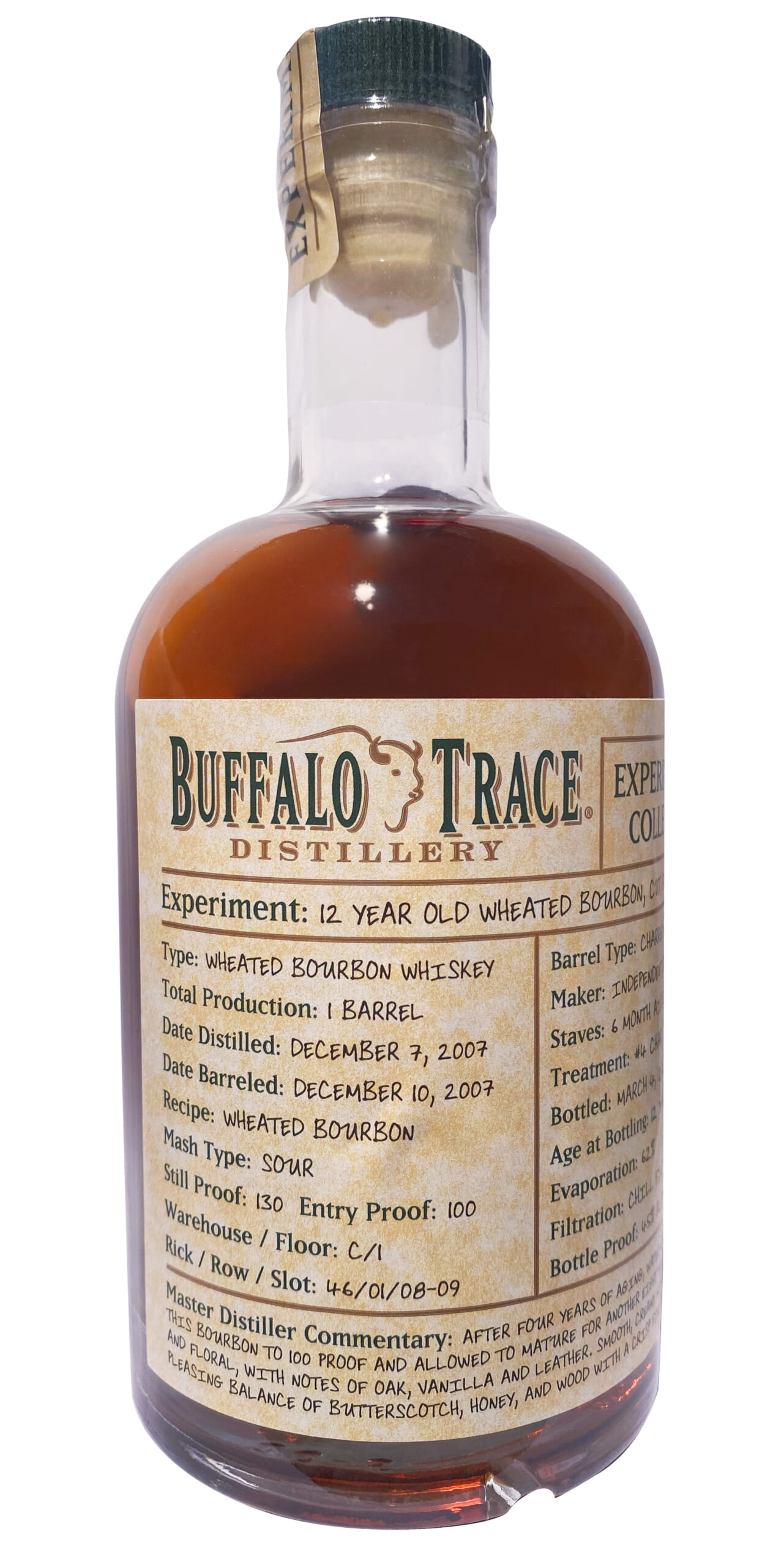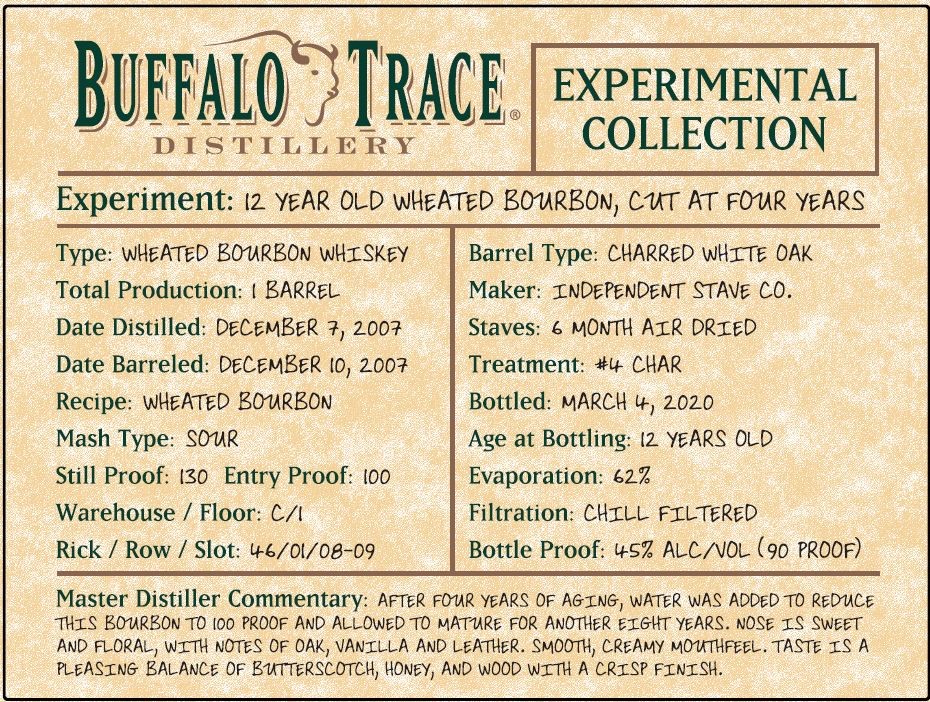Buffalo Trace Releases New Experimental Wheat Bourbon
100-proof bourbon that’s made in a totally unique way.

Buffalo Trace is launching its first experimental whiskey for 2020–a unique wheat bourbon aged for four years, cut with water, then re-barreled and left to age for another eight years.
The whiskey was first aged in one new barrel in 2007, when it was filled with Buffalo Trace’s signature wheat mash recipe and put in the barrel at 114 proof. After four years of aging, the barrel was removed, the bourbon was cut with water to lower it to 100 proof, then put back into the same barrel and left to age another eight years in the same warehouse.
Although it’s rare to interrupt a bourbon aging process, the distilling team at Buffalo Trace knew what they were doing. “We’ve always known water was a necessary component in making whiskey,” Master Distiller Harlen Wheatley says.
“This experiment helped us to understand how important a role water actually plays in whiskey production. The result of this experiment led us to a bourbon that is actually one of my favorite experiments.”
Wheatley described the new bourbon as having a “nose that is sweet and floral, with notes of oak, vanilla, and a bit of leather. There’s a really smooth creamy mouthfeel here. The taste is a pleasing balance of butterscotch, honey, and wood with a crisp finish.”

This is the 23rd experimental release from Buffalo Trace Distillery, which started its first experimental release in 2006. There are more than 25,000 experimental barrels of whiskey aging in the warehouses of Buffalo Trace Distillery, the largest number of experimental barrels ever held in inventory at the National Historic Landmark Distillery, and most likely the world.
The limited edition Experimental Collection is packaged in 375ml bottles, and each label includes all the pertinent information unique to that barrel of whiskey. The whiskeys retail for approximately $46.99 per bottle, and will be available beginning in May.






